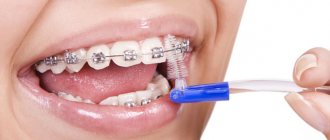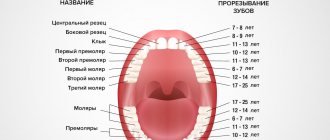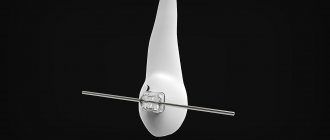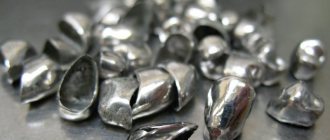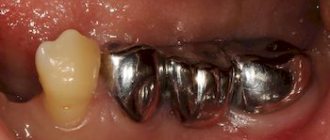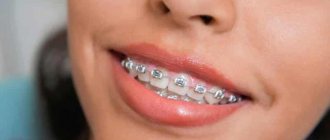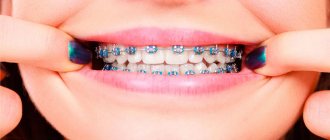Few people decide to undergo orthodontic treatment, believing that it is associated with high costs and discomfort. But often people’s fears are unfounded: installing braces is a multi-step, but safe process that goes without complications. We will tell you how orthodontic braces are placed and what stages this procedure includes.
In this article
- At what age are braces placed?
- Indications and contraindications for installing braces
- How braces are inserted: stages of orthodontic treatment
- How to install braces: diagnosis and treatment plan
- How to install braces: sanitation of the oral cavity
- Is it possible to put braces on crowns and fillings?
- How to install braces
- How to install braces: stages of the procedure
- Does it hurt to get braces?
- Braces activation
- How braces are placed on children and adults - is there a difference?
- How to care for braces
- How are braces removed?
Braces are installed primarily to correct the bite or straighten unevenly growing teeth. According to statistics, about 75% of children have problems with bite. If they are not eliminated in childhood, they will affect the health of teeth and gums in the future. In addition, people with malocclusion and irregularities in the dentition often develop complexes, lower self-esteem and, as a result, have difficulties in building interpersonal relationships.
Today, this problem can be solved in just a few years; you just need to install braces - dental brackets that are fixed to the dentition from the inside and/or outside and gradually straighten the teeth to a normal state. There are many rumors and myths surrounding the topic of orthodontic appliances.
Many people believe that getting braces is dangerous and painful, they cause discomfort, interfere with eating normally, etc. Such ideas are generated by ignorance. We'll tell you how braces are installed and how the preparation for their installation goes.
At what age are braces placed?
Braces are placed on both children and adults. Dentists say that the optimal age for orthodontic treatment with braces is 12-13 years. During this period, the final formation of the bite and the replacement of milk teeth with molars occurs. Pathologies in the structure of the dental system discovered in a teenager are eliminated faster than in adulthood.
In some cases, braces are placed earlier - at 8-11 years. However, if a person has missed this point, he can correct the problem as an adult. Of course, the treatment process will be longer, but no less effective. There is no upper age limit as such: an adult can be prescribed to wear braces as long as he has teeth, and bite correction is justified in terms of indications and contraindications.
Indications and contraindications for installing braces
Braces are placed to eliminate the following dental problems:
- malocclusion;
- uneven development of the jaws;
- anomalies of individual teeth;
- deformation of the dentition;
- chewing dysfunction;
- impacted teeth;
- large interdental spaces.
Contraindications to wearing braces can be absolute or relative. Among the first, which completely exclude the possibility of installing an orthodontic structure, are:
- absence of most of the teeth;
- some oncological pathologies;
- blood diseases;
- diseases of the endocrine system;
- very weak immunity;
- pathologies of the skeletal system;
- tuberculosis and HIV;
- psychiatric disorders.
Relative contraindications are temporary. These include:
- periodontal disease;
- caries;
- wounds in the oral cavity;
- metal implants;
- poor hygiene.
Braces can be placed only if the listed factors are eliminated. Indications and contraindications are identified during diagnosis - the first stage of installing orthodontic brackets.
Reviews
There are both enthusiastic and negative reviews on the Internet.
Some people used the devices to create a Halloween costume, while others damaged the mucous membranes of their mouth due to improper use.
In the comments to the article, you can share your reviews about fake braces.
If you find an error, please select a piece of text and press Ctrl+Enter.
Tags: braces vestibular braces
Did you like the article? stay tuned
Previous article
Features of restoring damaged teeth with half-crowns
Next article
Unique Sia braces – the orthodontic art of Italy
How braces are inserted: stages of orthodontic treatment
The process of installing braces, that is, fixing them on the teeth, lasts about 1.5-2 hours. Preparation takes much more time. In general, treatment includes the following steps:
- Diagnostics: obtaining x-rays, on the basis of which braces will be made.
- Drawing up an individual treatment plan, advising the patient on preparation for the procedure.
- Sanitation of the oral cavity, treatment of diseases of the teeth and gums: caries, inflammatory processes, etc.
- Installation of an orthodontic structure, fixing it on the dentition.
- Assistance in adaptation: doctor’s recommendations regarding nutrition and care of teeth and braces during the treatment period.
Let's look at these stages in more detail.
Consolidation of treatment results in adults
After the braces are completely removed, the teeth are in the correct position, but are not yet secured in it. As a result, if nothing is done, they will quickly return to the original state to which they are already “accustomed”. Therefore, after correcting the bite, it is necessary to wear special structures - retainers. And the period of wearing them is called retention.
There are two main types of retainers—removable and permanent. Removable ones are also different:
- Records. They are made by hand in a laboratory, which poses the risk of human error and bias. This can cause the teeth to move slightly during retention. But such plates are inexpensive and can be easily produced in almost any clinic.
- Mouthguards. They are stamped on a special machine, which allows them to be manufactured as accurately as possible and eliminate the influence of the human factor.
Removable structures are quite comfortable, unnoticeable, and can be removed while eating and brushing your teeth. However, they also have a drawback - the removable design is easy to remove and then forget to put on. The result is the same - the teeth will return to their original places, and you will have to repeat the long and expensive treatment with braces.
Fixed retainers are splints made of special wire that are secured to the back of the teeth with cement. They are convenient because they are easy to wear all the time, but they make hygiene somewhat difficult. Additionally, these fixed structures cannot keep the teeth from moving completely, so they may end up shifting slightly. And the last drawback is that a permanent retainer can only be placed on the lower teeth.
Therefore, dentists more often recommend wearing special removable mouth guards, since they keep teeth from moving much more reliably.
The retention period is quite long - one and a half to two times longer than treatment. That is, if you wore braces for two years, you will have to wear retainers for another three to four years. But this is necessary, otherwise the teeth will shift and eventually the treatment with braces, and then the retention period, will have to be repeated.
How to install braces: diagnosis and treatment plan
Diagnostics allows you to identify contraindications, assess the condition of teeth and gums, take pictures and develop a further treatment plan. After the diagnostic examination, approximately a week passes, during which the doctor analyzes the material and draws up a plan for installing orthodontic structures. There may be several such plans and they differ in the method of fixing the braces or their type. The patient has the right to choose one of the proposed treatment options. Then the next stage begins - preparing the oral cavity for installation of the structure. Its duration is determined by the condition of the teeth and gums.
How to install braces: sanitation of the oral cavity
After installing braces, the procedure for brushing your teeth becomes noticeably more complicated and the risk of developing caries increases. To reduce it to a minimum, you need to eliminate all carious cavities. The main task of the dentist is to identify hidden foci of pathology that are located in the interdental spaces.
It is also necessary to eliminate inflammatory processes if they were detected during diagnosis. In other words, it is necessary to cure those pathologies that may become more complicated after installing braces. In addition, at the preparatory stage, ultrasonic cleaning is carried out, during which plaque and tartar are removed.
Some patients are worried that they will have to remove some teeth: “eights”, impacted ones, etc. Extraction is indicated in the following cases:
- crowded teeth;
- teeth that are too large (free-standing);
- presence of extra teeth;
- severe asymmetry of the jaws;
- decaying teeth that are useless to treat.
As a rule, if removal is necessary, it is wisdom teeth, which often erupt with complications: they grow to the sides, remain partially or completely in the gums and subsequently cause malocclusion.
Is it possible to put braces on crowns and fillings?
Adults, even if they take excellent care of their teeth, have had caries at least once in their lives, so there are almost no patients without fillings or crowns. Their presence is not a direct contraindication to the installation of braces. Modern compounds from which fillings are made form a monolithic structure with dental tissues, so they do not fall out or collapse. They are replaced only if they were installed long ago or incorrectly.
As for crowns, they may require the installation of metal braces, which provide a more reliable and durable fixation. Thanks to this, the crown will be protected from external influences.
Content:
- Preparatory activities
- Options for installing braces 2.1. Direct method 2.1.1. How it goes 2.1.2. Advantages and disadvantages 2.2. Indirect method 2.2.1. Advantages and disadvantages
What result will be obtained after fixing braces depends on many factors. But the most important thing is that the installation of the leveling structure is done correctly. If you fix the device incorrectly, the teeth will close at the wrong angle. Then there will be no need to talk about any correction of the bite, no matter how long the patient walks with an “iron smile.”
How to install braces
Braces are installed in two ways: direct and indirect. The essence of the first method is as follows: the clasps of the structure are glued onto each tooth crown using special dental cement and glue. Next, an arc is threaded through them. After fixing the braces, any remaining adhesive is removed.
When using the indirect technique, a plaster model of the patient's jaws is prepared. The dentist places locks on it, and then transfers the finished structure into the patient’s oral cavity. The entire mechanism is glued to the teeth in one go. This method can significantly reduce the procedure time - up to 30-40 minutes. This is about an hour faster than direct installation. Since the patient has to sit with the jaw expander in his mouth all this time, the difference is quite noticeable.
How to install braces: stages of the procedure
Braces can be vestibular and lingual. The former are attached to the outside of the teeth, the latter - from the inside. Regardless of what structures are installed, the procedure is carried out according to the following algorithm:
- the patient’s lips are lubricated with cosmetic Vaseline, after which a dilator is inserted into the mouth;
- saliva is removed from the oral cavity using a special tube;
- Glue is applied to the teeth, and medical cement is applied to the clasps that are attached to the enamel;
- Under the influence of an ultraviolet lamp, the cement and glue harden, as a result of which the clasps adhere to the tooth surface.
If the installation is direct, an arc is threaded through the clasps. Indirect fixation involves transferring the finished structure into the patient’s mouth. The arc has a memory effect. Gradually, she returns to the shape that was given to her during the preparation of braces and straightens her teeth.
Our team of doctors
Maxillofacial surgeon, Implantologist
Bocharov Maxim Viktorovich
Experience: 11 years
Dental surgeon, Implantologist
Chernov Dmitry Anatolievich
Experience: 29 years
Orthopedist, Neuromuscular dentist
Stepanov Andrey Vasilievich
Experience: 22 years
Endodontist, Therapist
Skalet Yana Alexandrovna
Experience: 22 years
Orthopedic dentist
Tsoi Sergey Konstantinovich
Experience: 19 years
Dentist-orthodontist
Enikeeva Anna Stanislavovna
Experience: 3 years
Metal braces
Standard and reliable equipment for correcting jaw and dental disorders of any complexity. There is little aesthetics here because it stands out against the background of the teeth enamel. The lack of aesthetics of the design is compensated by the quick and high-quality achievement of the result. Implantmaster uses self-ligating metal plates from the Damon model range.
Pros:
- correct pathologies of varying severity;
- daily hygiene care is very simple;
- reasonable price;
- strength (the highest among orthodontic plates);
- the color of the equipment does not change under the influence of food;
- short treatment periods.
Minuses:
- Injury to the soft tissue structures of the oral cavity and tongue is possible.
- Noticeable when smiling or talking. Some patients refuse this model due to aesthetic discomfort.
- Allergies may occur.
Ceramic braces
The shade of such equipment matches the enamel of the teeth and is almost invisible during conversation. For the smile zone or for all units, taking into account the opinions of patients, Implantmaster specialists can offer a self-ligating system made of Damon Clear ceramics. She is in great demand.
Pros:
- Productivity. Installed to correct severe pathologies of jaw closure.
- Does not stain when worn for a long time, taking into account all the rules of hygienic cleaning.
- Few doctor visits are necessary.
- Resistant to loads.
- Aesthetics and comfort throughout the entire course of treatment.
Minuses:
- Therapy takes longer than with metal equipment.
- The cost of the system is several times higher than that of a metal structure.
- The need for thorough cleaning of equipment and the oral cavity. It is not advisable for children and adolescents to record.
- An allergic reaction may occur.
Sapphire braces
Which braces are better: sapphire or ceramic? When choosing between these two categories of wafers, sapphire wafers are the best option. They perfectly combine aesthetics and durability. The components of the bracket system are made of artificial sapphire - a very durable, non-toxic and biocompatible material. The plates do not change color when exposed to food or drinks, tobacco, coffee or wine.
Recommended for installation when there are wide gaps between units and lack of space in the dentition.
Pros:
- Highly aesthetic (matches the natural shade of enamel).
- Does not stain.
- Does not cause discomfort.
- Does not damage soft tissue structures of the oral cavity.
- The pronunciation of sounds is not affected.
Minuses:
- The material itself is durable, but the plates can break due to crackers or chewing gum.
- Unpleasant sensations may appear when the gums are sensitive.
- Effective only in simple deviations.
- The course of treatment lasts longer than usual.
- Need special care
Invisible (lingual) braces
Fixation is carried out on the enamel of the teeth from the oral cavity (lingual). It turns out that the main positive feature of such systems is their concealment from others. The plates are invisible when talking and smiling.
Additional positive characteristics:
- Small size. Throughout the course of therapy, the patient does not experience discomfort, because adaptation to the plates occurs quickly.
- Application of 3D technologies. When installing the system, it is more convenient for a specialist to fix the plates and control the movement of units, as well as the correction of general pathology. Already when planning a treatment regimen, a doctor with extensive experience can imagine the step-by-step movement of units along the jaw model.
Negative:
- Compared to other equipment, pain is higher when moving units.
- Problems arise when speaking and pronouncing sounds. Logoneurosis may develop due to worries about speech disorders.
- There is a high risk of injury to the soft tissue structures of the oral cavity and tongue.
- The treatment period is much longer than that of the vestibular systems.
- Expensive.
Ligature-free braces systems
What are the best braces? Most specialists and patients consider self-ligating systems to be the best choice, regardless of their high cost. They do not include additional fasteners, which makes them more discreet when talking. Self-ligating equipment is universal and suitable for all patients with clinical cases of varying complexity.
Pros:
- various plate materials (ceramics, metal, plastic, sapphire);
- quick addiction;
- effectiveness;
- comfortable course of treatment;
- smooth movement of units due to the use of small forces from the arc;
- resistance to color change;
- visit a specialist once every 2 months.
Minuses:
- lack of results in severe pathologies of the maxillofacial area and temporomandibular joint;
- high cost.
Does it hurt to get braces?
Pain during the procedure can only occur if the enamel and teeth are sensitive. If necessary, the doctor will give an anesthetic injection. Once braces are in place, a person may experience discomfort, especially when chewing food. Usually he feels pressure on his jaw, but, as a rule, there is no severe pain that needs to be relieved with medication. Adaptation to braces occurs within 5-15 days, depending on the condition of the teeth.
Braces activation
Immediately after installation, the braces are activated and begin to correct the bite and irregularities. Gradually, the pressure of the arc will weaken due to the displacement of the teeth. Periodically you need to visit the orthodontist in order to tighten the structure and increase the tension. This will continue for 1-3 years until the dental problem is completely eliminated.
Conclusion
Installing braces is a complex multi-stage process that requires precision, high qualifications and professionalism from the dentist. Different brace systems have differences in installation. To ensure that the procedure is quick and comfortable, it is important to choose a clinic with a good reputation. Leonid Gorbunov's dentistry employs responsible orthodontists with extensive experience, so the effectiveness of treatment is guaranteed.
Installation video
Posted by:
How to care for braces
To reduce the likelihood of developing dental diseases, the patient will have to carefully monitor their diet and oral hygiene. In particular, it is necessary to avoid hard and sticky foods, foods with dyes and smoking. If possible, you should limit your consumption of sweets. For oral care you should purchase:
- a brush with V-shaped bristles (CURAPROX Ortho);
- brush (Curaprox CPS 10, Biorepair Scovolini Interdentali Cilindrici);
- dental floss (Mirafloss implant chx);
- rinse aid with antibacterial properties (Biorepair Mouthwash).
It is advisable to use toothpastes without abrasive substances and periodically (2-3 times a week) clean the oral cavity with an irrigator. To do this, purchase devices that are suitable for caring for orthodontic structures: Little Doctor International Ltd Aquajet LD-A7, Donfeel Donfeel OR-820D Compact, Revyline RL100, Donfeel Donfeel OR-888, Panasonic EW-1411, Revyline RL 200XL, etc.
Rubber bands
These devices are used when wearing ligature systems and serve as small rods to set uneven dental units in the correct direction.
They are made in the form of small rings from an elastic material and have a smooth surface. This device is suitable for absolutely all patients and does not cause allergic reactions.
Elastic bands serve not only as an auxiliary element when wearing an orthodontic apparatus, but are also used as a decorative means. On sale you can find elastic bands of various shades, which allows you to make a choice based on the individual preferences of the patient.
You should not ignore the recommendation of a specialist on wearing rubber bands. This device is the key to effective and quick correction of the bone organs of the oral cavity.
How are braces removed?
Dismantling of the structure is carried out in the dentist’s office and is carried out in several stages:
- using a special tool, the locks are unfastened;
- the arc exerting pressure is disconnected from the locks;
- each lock is removed using tweezers;
- Solvent removes remaining glue from the enamel.
To consolidate the results of treatment, the patient wears a plate for 2-3 weeks to straighten the teeth and protect them from stress. Immediately after removing braces, ultrasonic cleaning or whitening can be performed.

